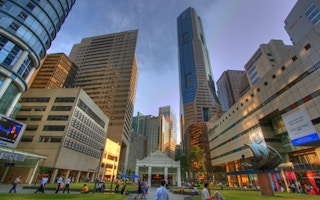An independent study by the Economist Intelligence Unit (EIU) has declared Singapore to be Asia’s greenest city.
The study evaluated 22 major Asian cities on their policies and performance in eight categories: energy and CO2; land use and buildings; transport; waste; water; sanitation; air quality and environmental governance.
Singapore was the only Asian city that rated ‘well above average’ overall. The city state had consistently strong results in all eight categories and best performance in the waste and water categories.
Dr Amy Khor, minister of state for the Ministry of the Environment and Water Resources, accepted the award today on behalf of Singapore. The key, she said, was to achieve a good balance between economic growth and environmental sustainability.
The cities that rated ‘above average’ were Hong Kong, Osaka, Seoul, Taipei, Tokyo and Yokohama. Karachi came in last as the only city to receive the ‘well below average’ rating.
The study was the third in a series of five studies commissioned by Siemens, the Germany-headquartered provider of environmental and health technologies. EIU released green city indexes for Europe in 2009 and Latin America in 2010.
Growing cities, growing awareness
Asia’s cities are growing faster than anywhere else. According to the study, Asia’s urban population has increased by 37 million people annually for the last five years.
Coinciding with the increasing numbers of people is a growing awareness of environmental issues. For example, most cities in the Asian index have established policies on emissions and energy efficiency and every city has a strategy in place to reduce, reuse or recycle waste.
Implementation is another matter. While residents in Asian cities produce less waste per person than in other regions, an average of 380 kg versus 465 kg in Latin America and 511 kg in Europe, their access to waste management is lacking. Only seven of the 22 cities have adequate waste collection and disposal.
None of the cities in the index performed satisfactorily in the air quality category. At 108 micrograms per cubic metre, the index’s average concentration of particulate matter is more than five times the World Health Organisation’s recommended safe level of 20 micrograms.
Clean air policies are now in place throughout most of Asia’s large cities, however, and performance is expected to improve. The report cites the improvements resulting from the implementation of strict air quality regulations in Yokohama and Tokyo, as well as an increasing commitment to strong environmental policies from the Chinese government.
Best practises
The ultimate goal of the study, said Siemens’ chief sustainability officer Barbara Kux at a press conference today, was to identify best practises from the Asian region and to stimulate idea sharing.
Ms Kux said, “The battle against climate change will be decided in cities. This applies to Asia…more than anywhere else on earth. Only green cities will make life worth living over the long term.”
Ms Kux added that Singapore owed its sustainability leadership to two things: a long-term, rigorous commitment to the sustainable development of its resources; and its targeted focus on the three key areas of water, waste and energy efficiency.
As the fourth wealthiest city in the index with a GDP per person of US$36,500, Singapore has the financial resources to invest in environmental infrastructure such as its NEWater water reclamation plants, an expanding public transport system and a waste collection and disposal system that serves 100 percent of the population.
This is consistent with the study’s findings of a clear correlation between wealth and environmental performance in both Europe and Asia.
The exception to the wealth- performance connection is in the area of carbon dioxide emissions, which tend to rise as citizens’ purchasing power expands and their levels of consumption increase.
This is the case for Singapore, which lags far behind other Asian countries in limiting per capita energy emissions. Singapore emits 7.4 tonnes of CO2 per person, compared to the Asian average of 4.6 tonnes per person and the European average of 5.3 tonnes per person.
According to the report, income is not the only factor in consumption levels. Jan Friederich, who headed the study for EIU, said, “…when income rises above a certain point, at around US$20,000 per person, average consumption declines.”
Mr Friederich noted that this tipping point’s existence serves as a reminder that political will and administrative effectiveness are just as important as wealth in a city’s sustainability. Growing middle classes in urban centres tend to be more environmentally aware and demand better sustainability performance.
Delhi provides an example of a city that performs well without financial resources. Despite having one of the lowest levels of GDP per capita at US$2,000, it has an extremely strong performance in waste and emissions due to a culture that encourages recycling and careful consumption.
With or without wealth, investing in environmental systems will be key to sustainable growth. “(Environmental) technologies pay for themselves by saving energy over their lifetime. They are not ‘luxuries’ for affluent cities; they are good investment for every city – including those in emerging economies,” said Ms Kux.
In a separate event tonight, The Straits Times environment correspondent Jessica Cheam, who is also the founder and editor of Eco-Business, was one of ten journalists honoured with the Siemens’ Green Technology Journalism Award.

















